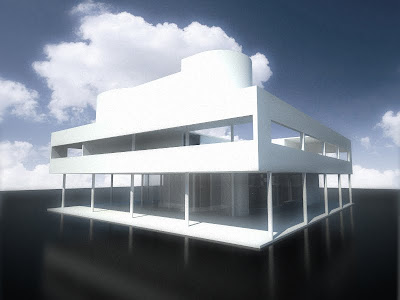A Farm on Every Floor
 The NYT finally catches up with 50% of all architecture school theses: "If climate change and population growth progress at their current pace, in roughly 50 years farming as we know it will no longer exist. This means that the majority of people could soon be without enough food or water. But there is a solution that is surprisingly within reach: Move most farming into cities, and grow crops in tall, specially constructed buildings. It’s called vertical farming."
The NYT finally catches up with 50% of all architecture school theses: "If climate change and population growth progress at their current pace, in roughly 50 years farming as we know it will no longer exist. This means that the majority of people could soon be without enough food or water. But there is a solution that is surprisingly within reach: Move most farming into cities, and grow crops in tall, specially constructed buildings. It’s called vertical farming."Vertical Garden, vertical farm is not new. It's an ideal solution for food, land and resources. If the future projection on population versus land is accurate, by 2050, we will use up all land on Earth and population will reach its peak.
Vertical Garden (a.k.a Living Wall) is first invented by Patrick Blanc in 1988. It's decorative, elegant, functional, sustainable and renewable. However, vertical garden, to a certain extend, cannot feed on diet for all people. That is why vertical farm has been invented. Vertical Farm is a project leaded by Dr. Dickson Despommier who is a professor of Environmental Health Science of Columbia University. He wrote series of discourses on the necessity of vertical farming. And he also conducted studios for designing sustainable towers. More info from here.
There is also a video featuring Vertical Farm called "Living Tower" by SOA Architects which I think every city should have at least one or more.
The idea of have vertical farm is somewhat link back to the ideology of Tower of Babel, or even the Noah Ark. Or perhaps that is the only solution (except of living out of the Earth, like 'Wall-E') to solve over-consumption of natural resources. We actually live and self-sustain in this mini-Earth and we create things that we need in this mini-Earth through generation to generation until the mother of nature is back to a well-balanced equilibrium state. With the push of globalisation, I believe putting all people from all nations into this single mini-Earth is feasible. And perhaps that will create a new social cultural and identity for human beings.
Mahasamatman wrote a fantasic post called "GAIASys & The Evolution of the Planet" he said "...Globalization based upon these self-sufficient Resilient Communities has not yielded the soul destroying monoculture that many feared in the first part of the twenty first century. Instead, sustainable living and other nodes of permaculture that have permeated all aspects of life give rise to information rich, multi-story polyculture systems. Welcome to Earth; welcome to Gaia. Welcome to the future. Welcome to now."
How will the Earth become in the future, despite of the devastating Apophis Asteriod? How do we live in the future? How do we survive? How will architecture transform?
An exaggerated youtube on Apophis Asteriod just for fun. For you to think.




















